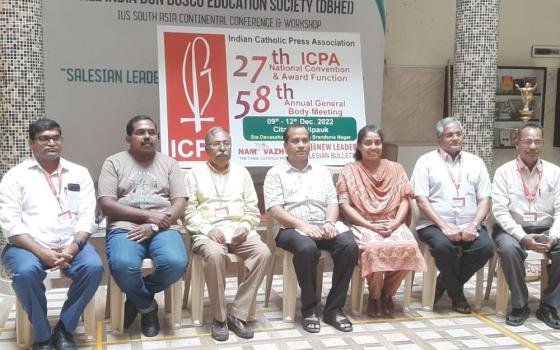
(Dreamstime)

CONNECTED TOWARD COMMUNION: THE CHURCH AND SOCIAL COMMUNICATION IN THE DIGITAL AGE
By Daniella Zsupan-Jerome
Published by Liturgical Press, $17.95
We have seen how the use of a simple hashtag can set hearts on fire. Think about the influence of #JeSuisCharlie, #ICantBreathe and #ArabSpring. The power of digital communication is a promise and a threat, a technological wonder and a ticking time bomb.
In Connected Toward Communion: The Church and Social Communication in the Digital Age, author Daniella Zsupan-Jerome acknowledges the unbounded nature of the Internet. "Contributions range freely from the socially conscious Ushahidi to the lolcat, from expert commentary to memes, from words of affirmation to vile comments. It is no longer plausible to imagine an ethical code of conduct that could rein all these in."
Interactive Web 2.0 technology has allowed the roles of audience and author to merge, and any hope of civility or community must rise from within. The Catholic church has long been conscious of the need for policies regarding the mass media. Church leaders, especially since the Second Vatican Council, have grappled with the problems and potential of what they refer to as "social communication."
In this book, Zsupan-Jerome sets Catholic pastoral theology in dialogue with digital culture. The author has compiled significant church documents that relate to social communication and analyzes them vis-à-vis contemporary ministerial formation.
She asserts that the church needs to train priests and lay ministers who can deal with pertinent questions about morality and ethics: "being, knowing, and being together in this digital age."
She begins with an examination of Vatican II's landmark conciliar decree Inter Mirifica (1963), and moves through later documents, including Communio et Progressio (1971), which she calls the church's "magnum opus on social communication." However, she also points out that the very topic of this 1971 work doomed it to become quickly outdated in many areas it addressed.
Communio et Progressio expressed the hope that mass media could help us move from connection toward communion. The author explains that this text uses the idea of "Christ the Perfect Communicator, who teaches us the utter centrality of the human person-in-relationship when it comes to media and communication practices."
She notes that although the tools of mass media have changed dramatically since 1971, the need for a dialogue between faith and media continues.
One of the most interesting discussions in the book is Zsupan-Jerome's interpretation of the 1986 "Guide to the Training of Future Priests Concerning the Instruments of Social Communication." In creating this document, the Congregation for Catholic Education also consulted the Pontifical Commission for Social Communications.
The guide focused on priestly formation, but Zsupan-Jerome believes it also has value for lay ministerial formation. This document comes closest to her intended focus of a dialogue between the church's writings on social communication and ministerial formation.
The guide discusses three levels of formation:
- Forming the conscience and critical thinking of all readers, viewers and listeners of mass media;
- Pastoral training for priests (and lay ministers);
- Specialist training for those who will work in or teach about mass media.
Zsupan-Jerome zeroes in on the second level, pastoral training. Noting that the universe of social media is vast, fluid and participatory, she says ministers must teach media literacy, but also must participate with the learners, because the flow of social media changes constantly. She advocates that the minister act as an expert guide, but he or she should also facilitate a community that shares best practices and acknowledges that the entire community, including the minister, is "figuring it out together."
The author lays out key texts regarding mass communication technologies and leads the reader through their most interesting aspects. It is clear from the start that she does not intend to color outside of doctrinal lines. Yet, this is a creative and valuable book.
She demonstrates the usefulness of what has already been written on the magisterial level and advocates for using these documents to form pastoral ministers for the digital age -- pastors who can teach digital literacy and help the faithful create and maintain Christ-affirming digital communities.
The contemporary tidal wave of digital technology twists and turns our lives, whether we acknowledge it or not. This book argues compellingly that the church must maintain a focus on the challenges of the information age, particularly when it comes to ministerial formation.
As Zsupan-Jerome writes, "Rather than incorporating digital technologies into ministry, the greater challenge is to perceive and understand ministry as embedded in a new culture shaped profoundly by digital communication."
[Melissa Jones teaches religious studies at Brandman University in Irvine, Calif.]




